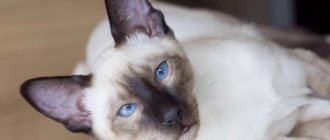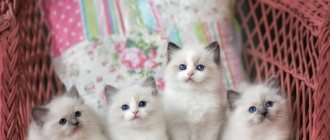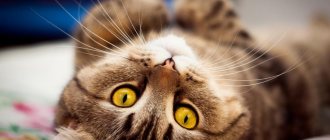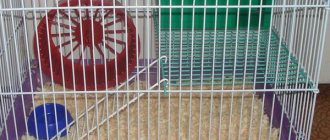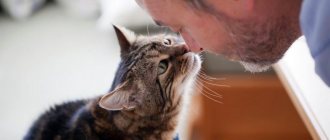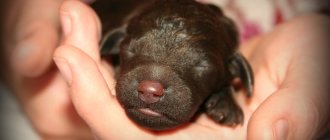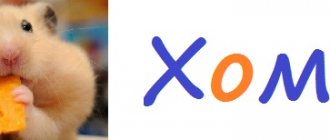Not many owners of small furry rodents have thought about how hamsters see. Different breeds differ not only in size, weight and color. Dzungarians see the world in black and white. Other breeds can see the world around them more clearly. Wild hamsters are more vigilant, as this helps them survive outside the comfort of their home. Insufficiently sharp vision is compensated by developed sensory organs. Let's take a closer look at how hamsters see our world.
Boring monochrome or how hamsters see the world
The quality of vision of hamsters of different breeds does not differ. But the viewing radius may change. Syrians have larger eyes than Djungarians, so the viewing angle is greater while maintaining the same sharpness of perception of things and a set of distinguishable colors.
Hamsters are myopic creatures, unable to clearly perceive objects at a distance of more than a meter. Animals see the world as blurry silhouettes with distinguishable contours. They are able to distinguish shades of yellow and green.
Hamsters' vision is not very sharp, but the animals are adapted to survival. The quality of vision is correlated with living conditions and does not prevent them from leading an active and safe lifestyle.
Such features of visual perception are associated with the lifestyle of animals. Babies are born in a hole in complete darkness. Rodents spend most of their lives in the same conditions. Bright sun rays are irritants. When in a sunlit area, hamsters squint. Therefore, the animals avoid interaction with the open sun and spend most of the day sitting in a hole or house.
Pet breeding
During the year, this animal can reproduce 3-4 times. Each litter contains 4-9 children. They are born blind and bald, but within a week they are overgrown with fur. When they reach the age of one month, they need to be resettled. At this time, they gradually begin to be perceived by the mother as competitors. The female can become pregnant already in the fourth month of life.
The pregnancy of the dzhungarika lasts 19-21 days. Moreover, within a day after giving birth, the female is able to become pregnant again.
It is important not to disturb her in the last days of pregnancy and children under one week of age. You will leave your smell, and this will make your pet very panicky. If one day he smells someone else's scent on his offspring, he may simply kill his children. To prevent this from happening, limit contact as much as possible during pregnancy.
What contributes to understanding the world?
Having learned that hamsters are not distinguished by visual acuity, the question arises: what helps animals navigate space and recognize the world. During the day, rodents are able to find food, water, toys and other attributes of a hamster house. Animals rely not only on vision, but also on smell, touch and hearing. Djungarians, having a poorer view, are able to see objects more clearly in the dark. Moving quickly, accurately determine the location of the necessary objects.
Animals use the following “devices” to perceive the world:
- Vibrissae are densely arranged antennae located on both sides of the spout. The hair follicle from which the mustache grows contains a large number of nerve endings. The animal “feels” surrounding objects with the help of vibrissae. If an object seems dangerous, the animal may dodge it. This “element” greatly simplifies the life of pets, helping them easily navigate in space.
- Glands responsible for smell. With the help of smell, animals are able to distinguish “friends” from “strangers” and recognize representatives of another species. Each hamster has its own smell, which is secreted by special glands. By secreting this secretion, rodents “mark” their territory. They leave their smell on the cage, toys and other attributes of the home. With the help of smell, Syrian hamsters are able to “recognize” a dwarf hamster even in bright light and vice versa.
Rodents can remember the location of objects in an apartment while walking. Your pet may also like dim light in the evening and at night.
Owners of hamsters may feel that their eyesight causes inconvenience to their pets and reduces the level of living comfort. In fact, rodents do not suffer from “poor” vision. Pets are well oriented in space due to additional “devices”. For a comfortable life, it is enough for them to comply with living conditions, have the necessary toys, care and attention from the owner.
Eating dzhungarika
When the cage is equipped, the next thing that needs to be coordinated is the dzhungarik’s nutrition. We installed a drinking bowl and two feeders for this purpose.
The water in the drinking bowl needs to be changed every day so that it is always fresh. It is known that when you feel thirsty, the body’s performance already drops by 30%. When an animal is always thirsty, it will always feel tired. This can easily undermine your health.
Let's find out what Djungarian hamsters eat. Life expectancy largely depends on nutrition. The diet includes dry food, and fresh vegetables and fruits, nuts and seeds, cereals and herbs. But we must not forget that some foods are strictly prohibited:
- You should not include anything salty or sweet in your diet.
- Some vegetables including red cabbage, onions and garlic.
- Exotic and citrus fruits, kiwi, avocados, pineapples, etc.
- Pumpkin, melon, mushrooms, sorrel.
- It is harmful to feed a Djungarian hamster with food from your table if you do not know what can harm the animal.
Feeding your pet something from this list is a kind of lottery. There is a chance that nothing will happen, perhaps the pet will survive, but often everything ends in death or irreversible processes.
Imported food for hamsters is recommended, since it contains all the necessary vitamins. Russian food, although much cheaper, contains practically nothing good. It is necessary to properly organize the nutrition of the Djungarian hamster in order to extend its lifespan.
Instead of a summary of the diet. First of all, provide high-quality dry food. For dilution, give fresh vegetables and fruits without signs of rot, corn, peas, seeds, nuts, carrots, cucumbers, cabbage, dill, parsley, bananas, grapes, etc. If you doubt whether you can give a certain product, search with us on the website or ask in the comments.
Vegetables for dzhungarik
Everything needs to be taken in moderation; a product can be useful in limited quantities and harmful in excess. Let's give an example using potatoes. It contains many different essential microelements, for example: vitamin C, vitamins B1, B2, B6, vitamin P, K, carbohydrates with ash substances. Also, a rodent can grind their teeth on it, which makes this vegetable an excellent product. It contains fats and proteins that are so necessary for the animal.
But potatoes simply contain an excessive amount of starch, which is poorly digestible. It also contains the toxin solanine, which suppresses their immune system. Improper feeding can disrupt the metabolism and lead to the death of the animal.
Potatoes should be given gradually, monitoring the pet’s condition. The main thing is moderation, because if you give too much, you can get poisoned. You can increase the amount of potatoes in the diet to about 15-20%. Aging Djungarians need to be offered a boiled vegetable; they are not able to chew a raw one. Young people can put any, only in limited quantities.
Thus, potatoes for a pet give:
- Lots of vitamins, proteins, fats and carbohydrates;
- Ability to sharpen teeth;
- Improper metabolism;
- Possibility of poisoning;
- Decreased immunity;
- Dangerous diseases.
There are so many different factors, and they all just depend on the amount you eat.
Interesting facts about golden hamsters
Animals of this breed living in captivity are very friendly and not at all aggressive. This is what distinguishes them from their wild counterparts. But at the same time, they skillfully guard their territory and will not allow strangers to be on it. For them there is no concept of family ties.
These animals prefer to live alone and are capable of killing a weaker hamster. Therefore, owners should keep them alone.
Scientists have proven that Syrian hamsters can eat almost anything. Therefore, in addition to seeds and grains or fruits, they also need to eat animal protein. In the wild, they can eat insects, carrion, or even hunt other small animals. In addition, sometimes females can destroy their offspring, which their owners try to prevent in captivity.
At home, these animals should be given lean and thoroughly cooked poultry or fish. Otherwise, these small and usually calm animals become quite aggressive and can bite.
Read also: What to wear with olive-colored trousers
Do not pick up small dungarian hamsters, otherwise you will feed them yourself
Female Djungarian hamsters usually give birth to 4 to 6 babies. On the fifth day after birth, babies acquire soft fluff; on the 10th day, the fur is already quite thick; by this moment the eyes also open. On the 20th day, the offspring of dwarf hamsters can be separated from their mother. To the pet owner
It is worth knowing that the cubs do not feel the danger of falling from a height: when they reach the edge of a shelf or table, they move further and can be very seriously injured when falling. Therefore, the cage should always be closed.
Newborn babies do not squeak only when they feel proper care from their mother. They begin to make shrill sounds when the mother does not feed or lick them. When going out to get food, the furry mother always covers the “kindergarten” with soft bedding.
They have the ability to learn
Photo: ISTOCK
With a little time and patience, these little mammals will learn to respond to their names, easily learn routines, become accustomed to cleaning, and will even perform some simple tricks if taught gradually. So the more you handle them, the more fun you'll get from them!
Parasitic, fungal, dermatological diseases and symptoms
Hamsters, regardless of breed, often suffer from parasitic and fungal diseases. Djungarians are diagnosed with lichen, dermatophytosis, and trichomoniasis. The main manifestations of mycoses are severe itching, restlessness, deterioration of the coat, the appearance of rashes on the body, scratching, wounds, and long-term non-healing ulcers. With dermatophytosis, the skin acquires a yellowish tint and is very flaky. If treatment is not started, pathogenic flora penetrates into wounds and scratches, which provokes inflammation in various structures of the dermis.
Important! If a hamster is sick with a parasitic or fungal disease and is kept in the same cage with other rodents, immediately isolate the sick animal and disinfect the pet’s home.
Hamsters are susceptible to dermatitis, dermatoses of various etiologies, as well as allergies. Deterioration in the condition of the coat, partial or complete baldness is provoked by frequent stress, deficiency of vitamins, minerals, external parasites, fungi, and substances of a toxic nature.
Your veterinarian will tell you how to treat mycoses. The pet will be prescribed fungicidal, antibacterial agents, solutions (Miramistin, Chlorhexidine), as well as antiparasitic shampoos.
They have very poor eyesight
Photo: ISTOCK
After hamsters are born, it takes almost two weeks before they open their eyes. But even then, they are at a disadvantage because they are nearsighted and colorblind. Hamsters use their whiskers and sense of smell to navigate. Try not to touch their nose. They have trouble seeing objects at close range, so when you approach their nose with your hand or finger, it may surprise them. They will become nervous, bite their finger, or simply run away in search of shelter.
Some more exciting facts about hamsters
- Syrian hamsters live on their own; they are solitary creatures and need their own space. If they are placed with other hamsters, they will become very aggressive and may even kill them.
- Hamsters' natural habitat is declining worldwide. As a result, the hamster population is now under threat, with some species on the verge of extinction.
- Hamsters do not have very good eyesight, they are very short-sighted and rely more on their sense of smell. Hamsters have scent glands, with which they leave marks on stones and other objects, thereby marking their path.
- Hamsters are color blind, i.e. they are colorblind
- When they are scared they may bite, but hamsters are generally kind and gentle creatures and love to play with their owners.
- Hamsters are quite easy to train to do various tricks and respond to their name.
- Hamsters typically live between two and three years, however, one year of human life is equivalent to approximately 25 years of a hamster's life!
- A male hamster is sometimes called a hog, and a female is sometimes called a sow.
Description
The Djungarian hamster is a type of hairy-footed hamster. Under natural conditions, Djungarians live in the dry steppes of Western Siberia and Khakassia. Homemade dzhungariki are very popular among residents of Europe and Russia.
Lifespan
On average, Djungarian hamsters live 12 months in the wild and 2-3 years at home. With proper care, a hamster can live up to 4 years.
Appearance
Giant dzhungarik and the giant's hand
The average body length of the dwarf is 8-10 centimeters, body weight is within 65 grams. The body is covered with gray-beige thick short hair with white splashes. There is a dark stripe on the back, which is a characteristic feature of Djungarian hamsters.
The fur on the paws is lighter than on the body. Thanks to the presence of thick fur on their paws, hamsters got their name - hairy-footed. In summer, hamsters are brighter in color; in winter, they lighten up so as not to be visible to predators in the snow. Domestic hamsters do not change their coat color during the winter.
The ears of the Djungarians are compact, round, the eyes are slightly bulging, reminiscent of beads. The hamster's tail is short: when the animal sits, it is practically invisible.
There are several types of coloring of the Djungarian hamster:
- light beige with white belly (standard option);
- gray with a white belly (this color is called “sapphire”);
- pearl dzungariks are white with gray splashes;
- red hamsters (tangerine color option).
In nature, hamsters lead a crepuscular and nocturnal lifestyle. Domesticated individuals also become more active in the afternoon and at night. During the day, the animal prefers to spend time in its burrow house.
